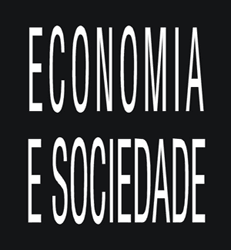Abstract
This paper discusses the relationship between financial integration and structural change based on a Minsky-Kregel approach. The motivation for this investigation derives from the fact that the opening of the Brazilian economy in the 1990s did not generate a structural change capable of increasing the weight of higher-technological sectors in the manufacturing industry. In theoretical terms we assume that financial liberalization in developing countries induces the loss in importance of the industrial sector in the productive structure, leading to an early deindustrialization process. In addition, it increases the external fragility and reduces the scope for developing countries to implement long-term economic policies to increase their potential output. In our econometric exercise applied to the Brazilian economy in the 2000s it was observed that financial integration and dependence on foreign savings, captured by an international liquidity proxy and dummy variables to incorporate the external financial instability in the period studied, reduced the share of Brazilian industry in GDP.
Key words:
Financial liberalization; Policy space; Brazilian economy

 Source: IPEA data and Brazilian Central Bank (Series number 11752).
Source: IPEA data and Brazilian Central Bank (Series number 11752).
 Source: Brazilian Central Bank (series number 11 776) and Brazilian Statistical Office, Quarterly National Accounts.
Source: Brazilian Central Bank (series number 11 776) and Brazilian Statistical Office, Quarterly National Accounts.
 Source: Brazilian Central Bank and Brazilian Statistical Office, Quarterly National Accounts.
Source: Brazilian Central Bank and Brazilian Statistical Office, Quarterly National Accounts.
 Source: Brazilian Central Bank. Authors' own elaboration.
Source: Brazilian Central Bank. Authors' own elaboration.
 Source: Brazilian Central Bank.
Source: Brazilian Central Bank.
 Source: The Brazilian Central Bank and The Brazilian Statistical Office, Quarterly National Accounts.
Source: The Brazilian Central Bank and The Brazilian Statistical Office, Quarterly National Accounts.
